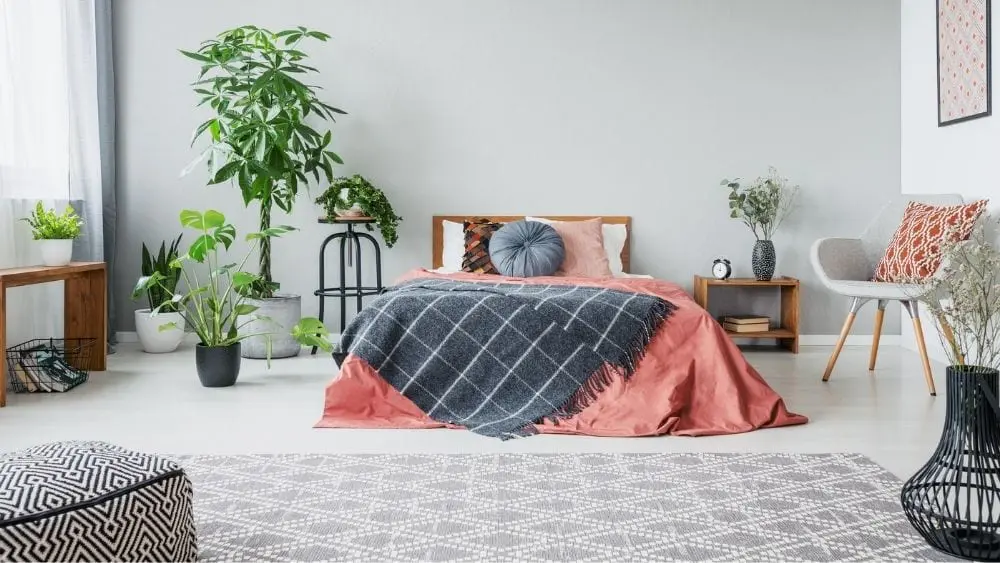
Flooring is an essential item in any home. But when it comes to bedrooms, it’s instrumental for setting the mood, tone, and feel of an ultra-relaxing space. From chic tiles to plush and lush carpeting to modern wood and bamboo, there’s a multitude of options to consider that will make your bedroom totally-you.
Looking for the right flooring for your needs and your personal style can seem like a huge undertaking. And, if you’re anything like us, you’ll want to make sure that this new flooring is durable and helps tie the bedroom together with an overall sense of harmony. On top of that, many homeowners – like you –also want to find the best flooring option that sticks within your budget.
Whether you’re seeking an extra layer of coziness in your bedroom, sleek sustainability, or luxe classic, we rounded up the best flooring options to consider. With basic guidelines in place with pros and cons for each product, you’ll be able to land on the perfect flooring for your bedroom in a snap.
Which material is best for your bedroom? Browse our detailed guide below to find out.
Bamboo
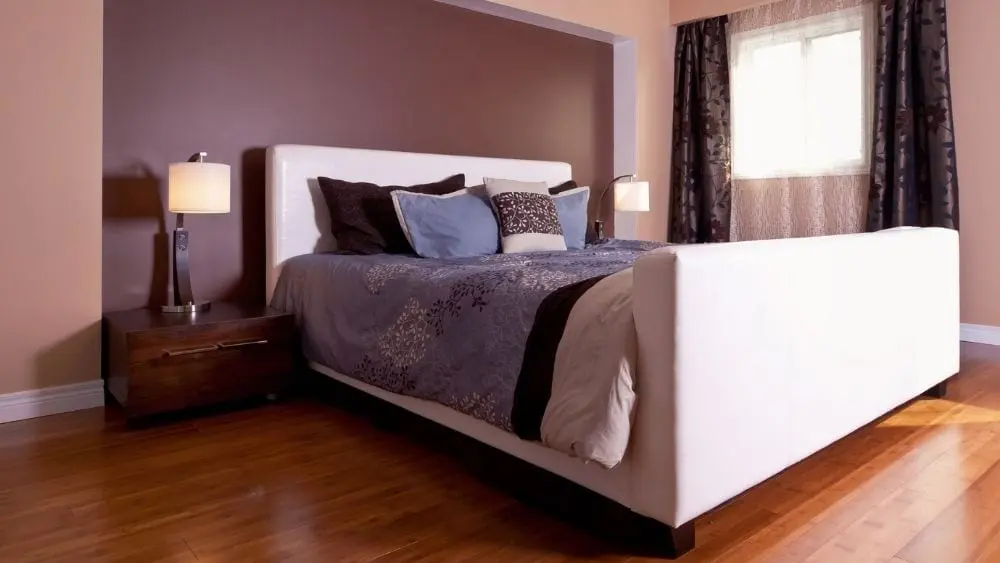
The Basics: Bamboo flooring stands apart all on its own. The sustainable flooring comes from a bamboo plant and costs between $5 and $7 per square foot. The sustainable option is gaining more trendiness and traction as time marches on.
Pros: Bamboo flooring has some big time perks, too. It’s a completely green and sustainable product and is long lasting. Homeowners who want a durable, green, and child-friendly option should consider bamboo. The texture of the plant is softer than hardwood but has the appearance and feel of wood.
Cons: The green product is budget savvy, but like hardwood, bamboo flooring won’t create a barrier for noise. Homeowners will have to install additional padding on the floor before installing bamboo to mask sound and volume. Since the surface of bamboo can be hard and a bit cold, you might want to mix in a few rugs too.
Carpet
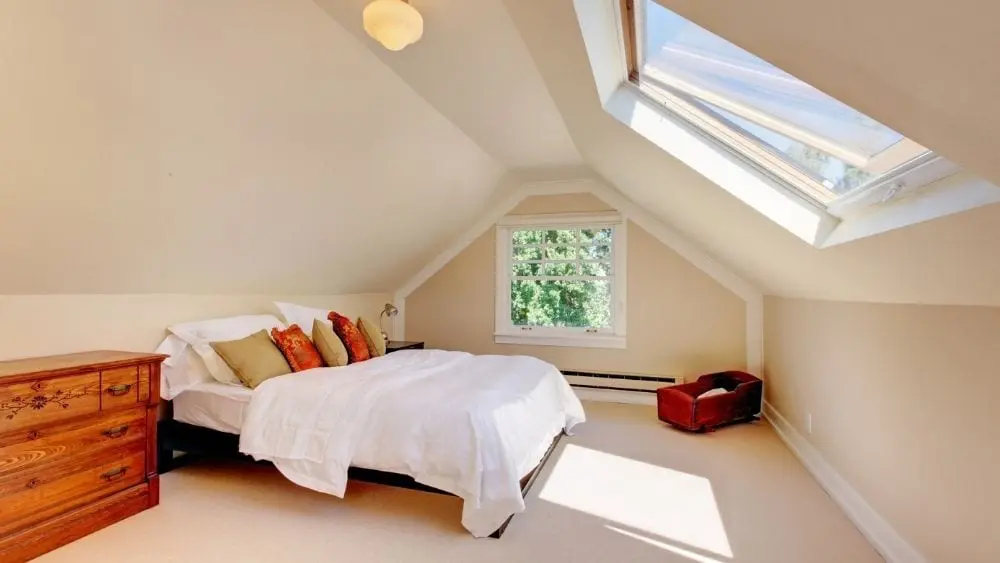
The Basics: When a laid-back, serene bedroom comes to mind, many homeowners quickly imagine thick, warm, and soft plush carpeting. After all, lush carpeting is the pinnacle of style and coziness combined. For lots of folks, carpeting is the first texture they feel on their feet upon waking up each day. This inviting sensory detail can add an extra element of calmness and relaxation to the home, especially the bedroom.
Carpeting may be one of the most popular choices favored among homeowners of all stripes. As the product comes in an array of colors, textures, shapes, and styles, it’s super customizable. Pricing can vary widely.
Pros: Carpeting can add warmth to any room – literally. By creating sensory texture for the homeowner, it also adds another layer of heat to the floor. In addition to tactile perks, carpeting is also superb for apartments, condos, and homes with multiple dwellers, as the material creates a strong sound barrier. Harmonizing a room while masking noise? Priceless. Noise-conscious homeowners can add extra layers of padding between the floor to create an extra layer of noise protection.
Carpeting can fit into a myriad of budgets, from wallet-conscious to price-is-no-option homeowners. This flooring type can be installed as wall-to-wall carpeting, floor fitting, or even area rugs of all sizes for strategic placement and layering.
Cons: For all of carpeting’s advantages, there are a few downsides. This product can be a bit difficult to clean depending on the fabric’s length and texture. Thus, allergens and dust are easily trapped under surfaces. It’s important when considering this flooring for your bedroom to be mindful of cleaning maintenance, allergens, and durability.
Another downside? Most carpeting isn’t recyclable and it’s not environmentally-friendly. When it’s time to install new flooring, this product just ends up in a landfill, creating more waste.
Hardwood Flooring
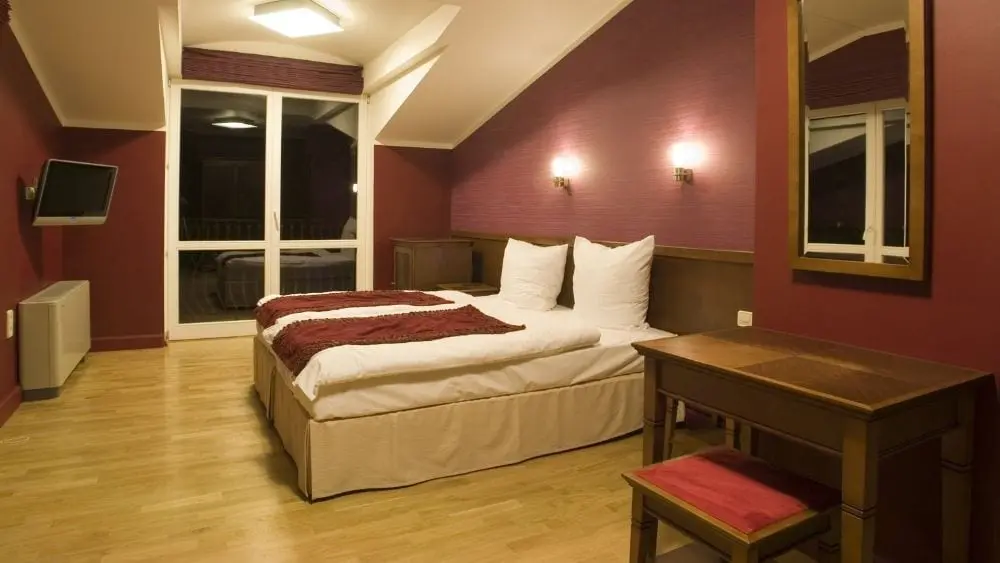
The Basics: Hardwood flooring is another classic choice found in homes across the States. This product is long lasting and durable, making it a smart investment in any home. This is one of the pricier options, as hardwood flooring can cost several thousands of dollars, not including installation.
Pros: On top of its longevity, aesthetically pleasing hardwood is versatile and can be used alongside rugs of all shapes, sizes, and textures. The very nature of wood is its sustainability, but another plus is that it retains some heat, making this product a little smarter, to boot. Due to this product’s attractiveness, hardwood flooring is an often sought-after feature for both realtors and prospective homebuyers. This product can increase a home’s value and scalability in future sales.
Cons: Overall, hardwood flooring is a great investment, but there are some drawbacks. It’s classic and stylish, but the wood doesn’t mask noise too well, nor is its hard surface kid-friendly. Homeowners will still want to invest in multiple rugs or carpeting on top of hardwood to curb sound and add in additional safety.
Laminate Flooring
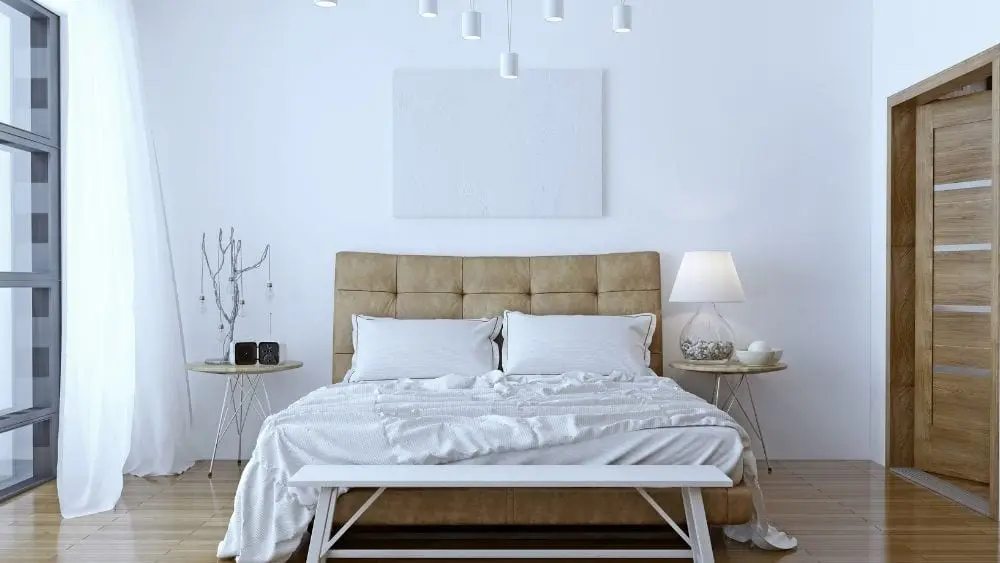
The Basics: Laminate flooring is made of particle wood and plastic. This flooring can look like wood or even stone. Laminate flooring is finished off with a clear, protective layer and is typically priced at $1 to $5 per yard.
Pros: Laminate is another versatile option like hardwood, plus it’s affordable and easy to install. This product can look like wood or stone but is a fraction of the price. Laminate has a super simple click-and-lock installation process.
Laminate is great for guest bedrooms and master bedrooms alike. The flooring can be a smart contrast to decorate area rugs and floor pillows!
Cons: While laminate is a budget saver, it’s not nearly as durable and it’s a bit tougher to clean. This flooring scratches easily and once it’s damaged, it’s not easily repairable. If extensive scratching or damage occurs, many homeowners may get a partial floor replacement and risk mismatching flooring. Or, a complete floor replacement for new laminate, or completely different materials.
Vinyl Flooring
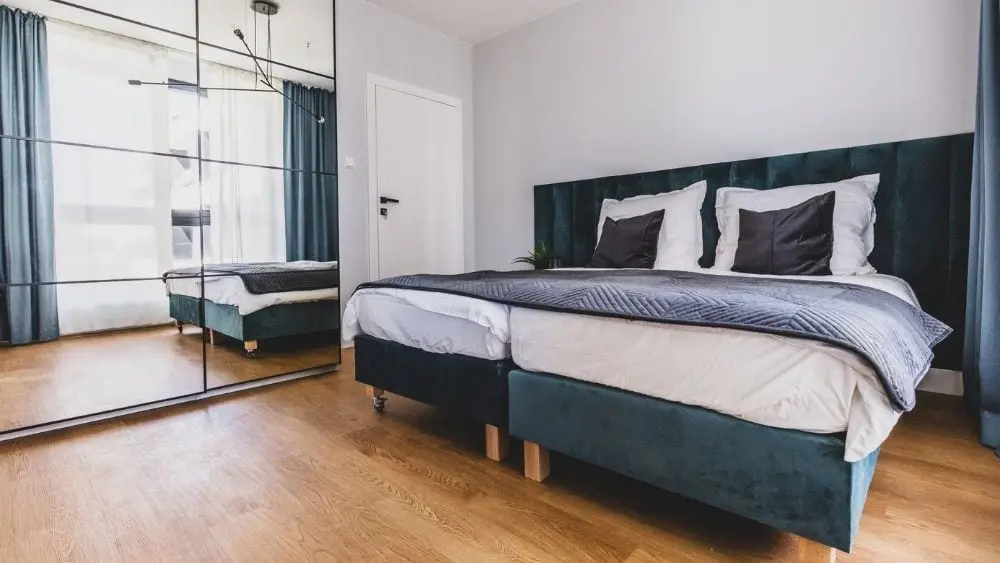
The Basics: Vinyl flooring is typically a core layer of flexible plastic synthetic sheets or tiles, followed by an image layer that imitates wood or stone; it’s and finished with a top wear layer for shine and protection. Vinyl tiles range from $2 to $8 per square foot.
Pros: Vinyl is a smart option for budget conscious homeowners. This easily maintained peel-and-stick flooring can be installed without much effort, especially for those who are familiar with DIY projects and renovations. The soft sheets are durable yet easy to clean with mops and cloths.
Vinyl sheets can be perfect additions for playtime in kid’s bedrooms, also as they’re durable and will help prevent furniture from skidding and sliding.
Cons: Vinyl is made from synthetic plastic, so it’s not a recyclable material. While durable, the tiles can be prone to scratching and the adhesive required for installation may contain chemicals.

Stephanie Valente is a Content Director and Editor in Brooklyn, NY. She’s previously held writing and social media positions at Barkbox, Men’s Journal, and currently works at a full-service advertising agency. She’s a self-confessed home and design enthusiast. Stephanie is an award-winning poet and fiction writer. When she’s offline, you can find her taking a yoga class, running, hanging out with her rescue dog Pepper. Find her on stephanievalente.com.
